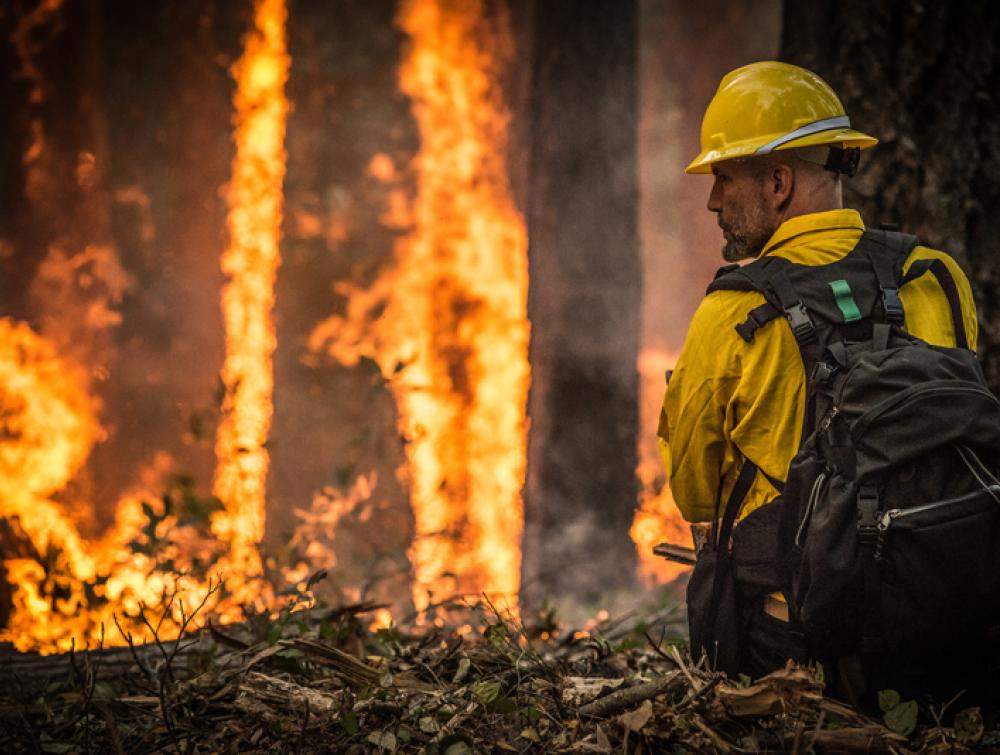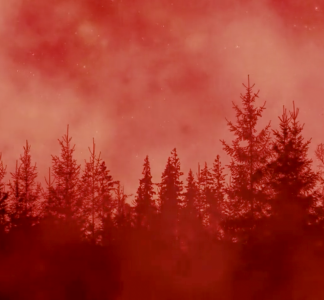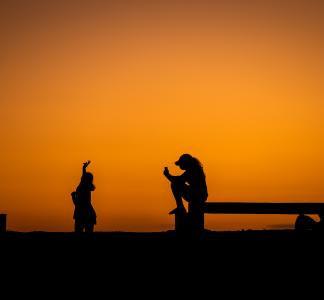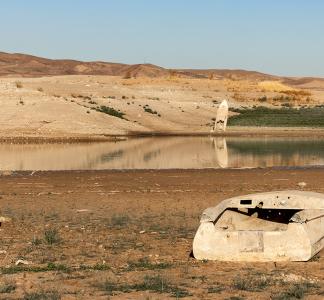Public lands & the climate crisis: Wildfires

A firefighter in Oregon oversees a prescribed burn to help stop a larger wildfire.
Lance Cheung (USDA), flickr
Public lands are key for wildfire mitigation
Devastating wildfires have been making headlines for some time in the West. But this year it feels different. Summer has not even officially begun, but already a series of out of control wildfires in Quebec have resulted in severe air pollution across the East Coast. At one point, New York City's air quality was among the worst in any major city on Earth with an abysmal air quality index (AQI) of 392 (the Environmental Protection Agency considers any AQI above 150 unhealthy for the entire population).
Last year, in New Mexico, the largest wildfire ever recorded ripped through villages that have been around since before the United States became a country. In Arizona, a destructive fire displaced the Indigenous community of Pan Tak and scorched part of a national observatory. In Alaska, early fires burned more than 2 million acres, threatening fish and wildlife that sustains local communities.
Of course, wildfire has literally been around forever. In fact, occasional fires are even necessary for nature to function properly (they clear the way for new plant growth, among other things). But the wildfires we're seeing now are bigger and more frequent.
Scientists estimate the wildfire season is now two to three months longer than in the 1980s. This unfortunate trend has led to a new era of record-breaking blazes. In 2022, more than 30,000 wildfires were recorded between January and June, the most within that time frame in at least 10 years.
Wildfires typically start with a spark—a lightning strike, an unattended campfire, a lit cigarette. Flames are spread by consuming vegetation, from the forest floor to trees’ canopies. The more fuel the fire encounters along the way, the longer, farther and hotter it will burn.
Climate change is turning forests and grasslands into the perfect kindling. Prolonged drought and extreme heat dry out vegetation and parch trees that can easily catch on fire. A 2020 study published in the science journal Nature also found that inconsistencies in soil moisture due to our changing climate may increase fire risk.
As wildfires burn stronger and for longer periods of time, we’re bound to see more destruction, home evacuations and loss of human life.
In addition to climate change, decades of fire suppression have contributed to crowded forests and an unnatural build-up of vegetation that fuels high-intensity fires. Another problem is that more development has been happening in or near forests and grasslands, creating areas where fires that might have burned out on their own in isolation instead end up damaging homes and communities.
As wildfires burn stronger and for longer periods of time, we’re bound to see more destruction, home evacuations and loss of human life.
The New York Times reported that half of all homes in the lower 48 states are currently threatened by wildfires. In some states, including Wyoming and Montana, more than 90 percent of homes face some level of risk.
The threat is likely to increase unless we get the climate crisis under control. Experts fear another destructive wildfire season similar to 2020, when more than 17,000 structures in the West were destroyed, prompting more than 100,000 people to evacuate. Overall, the fires cost almost $80 billion, including property losses, healthcare costs and recovery funds.
Reducing forest fuel
Over 30 percent of forests in the country are located on public lands and are managed by the federal government. To reduce severe wildfire risk, the U.S. Forest Service works year-round to reduce the amount of “fuel” in forests. The job includes cutting small trees, removing invasive species and setting “prescribed fires” to eliminate dead leaves, sticks and other debris.
But these practices are becoming harder to follow as the climate crisis becomes more severe.
“It’s my hope that prescribed fires will be vindicated as a tool to reduce fuel levels and continue its historic important role as a fire control measure."
Last year’s record-breaking Calf Canyon/Hermits Peak fire in New Mexico was actually triggered by prescribed fire. The U.S. Forest Service started the burn near Las Vegas at the beginning of the spring. Extremely dry conditions and wind changes led flames to spread and merge with another dormant fire. As a result, more than 340,000 acres went ablaze—an area larger than the city of Los Angeles.
After the incident, the agency paused controlled burns for 90 days and started an investigation. The goal is to understand how to better use prescribed fires while taking into account weather conditions that have shifted abruptly due to climate change. Meanwhile, President Biden promised to pay for the cleanup and temporary housing for those impacted.
Greg Aplet, senior science director at The Wilderness Society, believes controlled burns can still be an important step in fire management and mitigation. “It’s my hope that prescribed fires will be vindicated as a tool to reduce fuel levels and continue its historic important role as a fire control measure,” he said.
In the meantime, bigger and more dangerous fires are yet another reminder of how important it is to quickly transition away from our polluting fossil-fuel economy and take a bite out of the climate crisis. Public lands must be part of that process, starting with phasing out oil, gas and coal extraction and ramping up renewable energy in its place.



